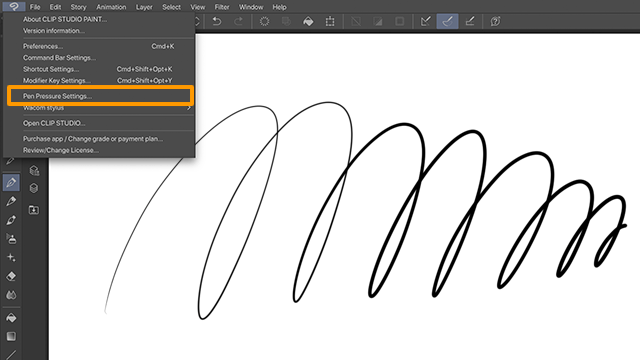Feline drawing tutorial
Preface
Orcs have the characteristics of wild animals and humans, and the mixing ratio between beasts and humans will have different appearance effects. Mix up the type you like according to your personal preferences~ Today, mainly feline orcs (domestic cats, tigers) will demonstrate step by step: 1. Head, face 2. Palms, soles 3. Body combination 4. Function introduction and Use materials 5. Reference materials.
Characteristics of animals and people
1. Head, face, ears
Pay attention to the proportions of the face. Here we draw the key points of the cat and tiger's faces in a simple way. The cat's facial features are concentrated, with big eyes, big nose and a small mouth. The tiger's facial features are three-dimensional, with eyes, a small nose and a large mouth.
Cat on the left, tiger on the right.
First draw a perfect circle, and then draw a cross line as an auxiliary for facial proportions. The cat's eyes are positioned approximately on the cross line, within a width of 1/4 of the diameter of the circle, and the distance between the eyes is about 1.5 The cat's eyes are wide. It should be noted that the oval shape of the cat's face will not exceed the auxiliary line of the circle (unless it is a fat cat). The nose falls about 1/4 of the diameter below the round shape. The nose is smaller than the eyes . The dotted line is the boundary line between light and dark in the three-dimensional area. Tiger's eyes are positioned higher than the crosshairs, within 1/4 of the diameter of the circle. The distance between the eyes is about 3 eye widths. The tiger's face is round, so the head There are many junctions between light and dark, and the facial features are much more three-dimensional than those of cats. It should be noted that the markings must be drawn along the lines of the bones to have a three-dimensional effect. The nose falls about 1/4 of the diameter below the circle. The nose is larger than the eyes* * , about 2 eyes wide.
From left to right, the degree of human⮕Beast transformation (human⮕Beast)
From left to right, there are different degrees of animalization. The proportions of human and cat faces are different, and the structures of the eyes are also different. The differences in eyes and noses are usually emphasized to enhance the feeling of animalization. When drawing the orc's hair and ears, you should pay attention to the position of the cat's ears. Use hair to cover the original human ears. Some designs choose to draw animal ears in the place of the human ears. **
The pupil of the eye will adjust with the light source, and the structure of the eyelids will be obvious, and there will usually be patterns at the corners of the eyes.
In addition to facial expressions, cats should also pay attention to the position of their ears when they are in different moods. For example, when they are happy or curious, their ears will face forward, when they are restless or unhappy, they will lie flat, when they are angry or scared, they will stick back, and their whiskers will droop. When threatening, it will grin and its beard will stretch out.
2. Palms and soles of feet
From left to right, the degree of human⮕Beast transformation (human⮕Beast)
Both human hands and cat paws have five fingers. Pay attention to the way the fleshy balls and nails appear. You can add plush effect to the hand joints. Human fingers have 3 knuckles, so they are slender. A cat's knuckles have 2 knuckles, so they look rounder and shorter. Pay attention to the length of the tiger's mouth and thumb.
The human foot has 5 toes, and the feline foot has 4 toes (5 fingers on the forefoot). Note that human nails are flat, while feline nails are hook-shaped. They are usually retracted but will be closed when attacking or threatening. Reach out. The joints of the animal's feet are different from those of humans, so when standing and walking, it looks like walking.
As for the buttocks, the tail will grow at a place equivalent to the human tail vertebra. A slender tail looks elegant, while a thick and short tail looks cute. The tail also reveals the emotion of the orc. When a cat is happy, its tail will rise, when it is angry, it will flick it from side to side (this is different from that of a dog), when it is angry or intimidating, it will explode its fur, and when it is scared, it will stick to its body or hold it between its legs. The tail, when relaxed, hangs naturally.
3. Body composition
From left to right, the degree of human⮕Beast transformation (human⮕Beast)
The body with a higher degree of animalization can be more flexible in design, such as emphasizing muscles to look more powerful, or emphasizing streamlined slender limbs to look more elegant.
When drawing an orc, you can adjust the body proportions more exaggeratedly, such as larger hands or a thick neck.
4. Function introduction and usage materials
Official function introduction
material
5.Reference materials
Movie: Puss in Boots: The Last Wish by **DreamWorks Animation LLC
Comic:Delicious In Dungeon (Delicious In Dungeon) by Ryoko Kuai
Monotone Blue by Nagebe
Textbook:Beast character drawing techniques(How to draw beastmen) by Muraki, Robo Sheep, Yama the Goat, yow, Madakan
Animal Sketch (How to Draw Animals) by Jakc Hamm
Thank you for reading the above. I hope it helps you:)
























Comment